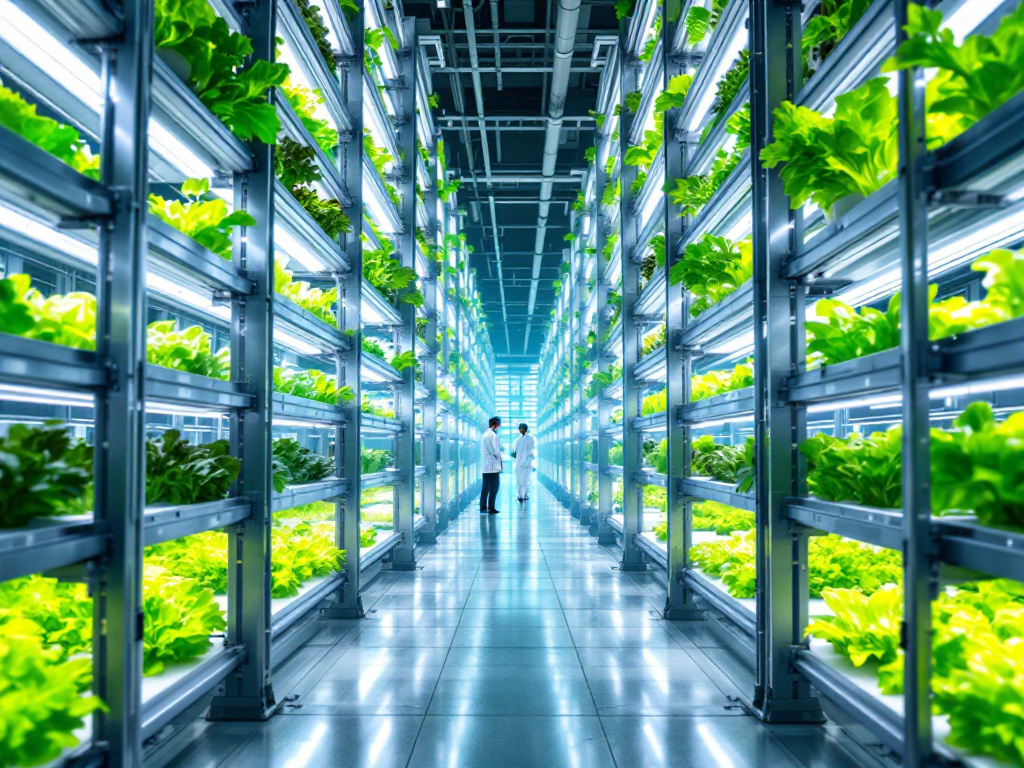Vertical Farming: The Future of Urban Agriculture
Addressing Urban Challenges in Agriculture
As cities continue to expand, the demand for fresh produce grows while available farmland shrinks. This rapid urbanization puts significant pressure on traditional food supply chains, often resulting in higher transportation costs, increased carbon emissions, and diminished product freshness. Vertical farming—a practice of growing plants in stacked layers or controlled indoor environments—has emerged as a revolutionary approach to satisfy demand in urban areas. By optimizing space, resources, and modern technology, vertical farming offers a promising solution for sustainable food production within city limits.

Core Principles of Vertical Farming
Vertical farming relies on controlled environments, allowing farmers to regulate factors such as light, temperature, humidity, and nutrient levels. This high level of precision enables crops to flourish year-round, independent of seasonal or climatic variations. There are several key elements that define successful vertical farming systems:
- Innovative Lighting: LEDs are commonly used for their low energy consumption and customizable light spectra. Adjusting the lighting spectrum can enhance plant growth, flavor profiles, and nutritional content.
- Efficient Irrigation: Hydroponic, aeroponic, and aquaponic systems deliver water and nutrients directly to plant roots, reducing waste and improving overall growing conditions.
- Space Optimization: By stacking layers of plants, vertical farms can maximize yield per square meter, making them ideal for high-density urban environments.
- Automation and Monitoring: Automated systems track soil moisture, nutrient balance, temperature, and other factors in real-time, ensuring minimal resource use and optimal plant growth.
Benefits and Sustainability
The benefits of vertical farming extend far beyond the novelty of growing produce indoors:
- Reduced Environmental Footprint: Cultivating crops in a closed environment dramatically cuts down water usage—some systems reduce water consumption by up to 90% compared to traditional field farming. Moreover, minimizing transportation distances lowers greenhouse gas emissions.
- Pesticide Reduction: Controlled environments reduce pest pressures and the need for chemical pesticides, leading to healthier produce and fewer ecological impacts.
- Resilience to Climate Change: Because vertical farms operate independently of weather conditions, they offer greater stability for food production amid increasingly unpredictable climates.
- Year-Round Production: With stable indoor conditions, vertical farmers can grow produce continuously, providing a consistent supply of fresh foods even during off-season months.
Integration of Smart Farming Technologies
Much like other modern agricultural trends, vertical farming benefits from the incorporation of artificial intelligence (AI) and data analytics:
- Automated Monitoring and Control: AI algorithms analyze real-time data, adjusting light intensity, temperature, feeding schedules, and humidity to maintain optimal growing conditions.
- Predictive Maintenance: By tracking equipment performance and detecting early signs of malfunction, smart systems reduce operational downtime.
- Resource Allocation: Advanced data analytics help farmers plan rotations, forecast yields, and manage labor more effectively, further enhancing profitability and sustainability.

A Glimpse into the Future
As populations concentrate in cities, vertical farming stands poised to play a pivotal role in feeding urban households. From small-scale rooftop systems to large commercial operations, this technology-driven approach has the potential to reshape the global food landscape. While challenges such as high initial costs and energy consumption remain, ongoing research and innovation aim to make vertical farming more affordable and energy-efficient. Through continuous improvements in lighting technologies, automation, and sustainable resource management, vertical farming could become a mainstay of urban agriculture worldwide.
References
- Despommier, D. (2011). The Vertical Farm: Feeding the World in the 21st Century. Picador.
- Wellyngton Silva de Amorim , André Borchardt Deggau , Gabriélli do Livramento Gonçalves , Samara da Silva Neiva , Arun R. Prasath , José Baltazar Salgueirinho Osório de Andrade Guerra (2019). Urban challenges and opportunities to promote sustainable food security through smart cities and the 4th industrial revolution.
- Kozai, T. (2013). Resource use efficiency of closed plant production systems with artificial light. Acta Horticulturae, 1227.
- Al-Kodmany, K. (2018). The vertical farm: A review of developments and implications for the vertical city. Buildings, 8(2), 24.
- United States Department of Agriculture (USDA). (2016). Urban Agriculture Toolkit. Retrieved from https://www.usda.gov
- Agri AI: Smart Farming Advisor app
If you want to learn more about Vertical farming, check out Agri AI : Smart Farming Advisor and feel free to ask any questions!

Leave a Reply